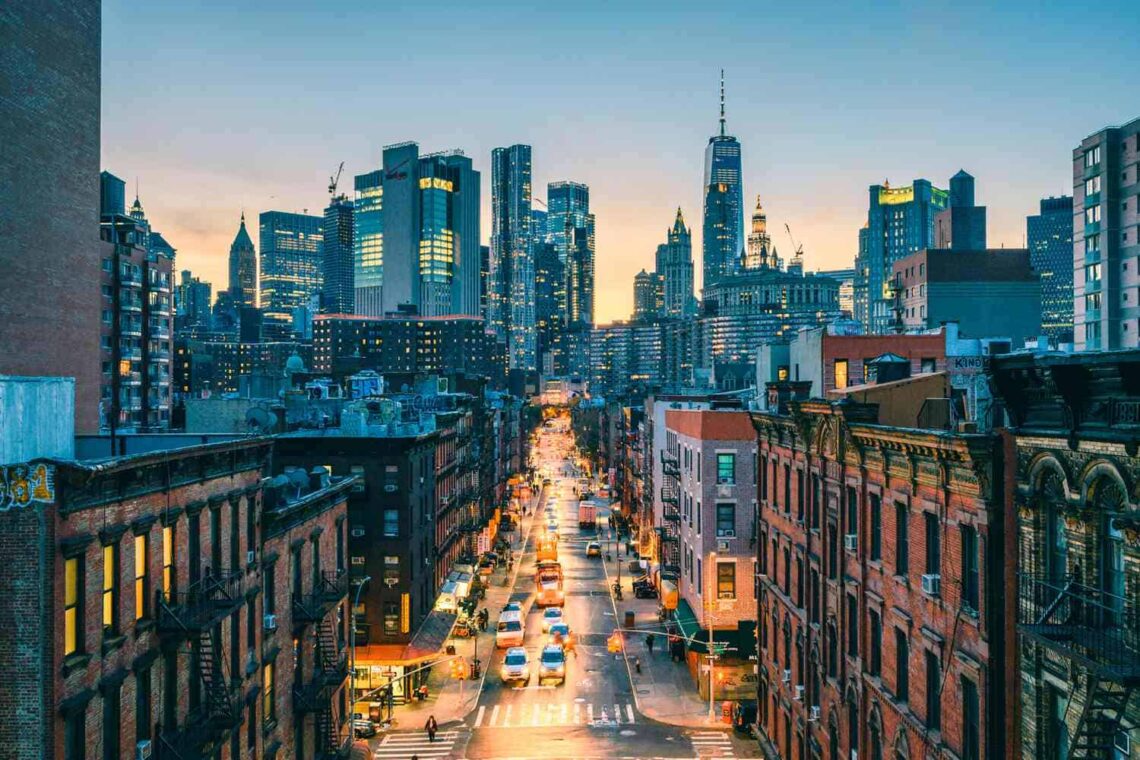Moving to a big city can feel like stepping into a whirlwind of opportunities, bright lights, and endless possibilities. But it’s not all glitz and glamour—city living comes with its share of challenges. Whether you’re dreaming of skyscrapers or wondering if the hustle is worth it, this article dives deep into the pros and cons of city life, drawing from real experiences and practical insights to help you decide if it’s the right fit for you.
Why Consider City Living?
City life attracts millions with its promise of excitement, career growth, and cultural richness. From New York’s buzzing streets to Chicago’s vibrant neighborhoods, urban areas are hubs of activity. But is it all it’s cracked up to be? Let’s explore the advantages and drawbacks to give you a clear picture.
A Personal Perspective on Urban Adventures
When I moved to Chicago for a job opportunity, the city felt like a playground. The energy was contagious—street festivals, rooftop bars, and the hum of the L train became my soundtrack. But I also learned quickly that city life demands adaptability, from navigating crowded subways to budgeting for sky-high rent. My experience mirrors what many face when weighing the urban lifestyle.
Pros of Living in a Big City
Big cities draw people for good reasons—opportunity, diversity, and convenience are just the start. Here’s why urban life can be a game-changer.
More Job Opportunities
Cities are economic powerhouses, home to major corporations, startups, and industries ranging from tech to healthcare. You’re more likely to find diverse roles and higher salaries in urban centers like Los Angeles or Boston. For career-driven individuals, this can be a major draw.
- Example: In New York, finance and media jobs abound, while Silicon Valley offers tech roles that are hard to find in smaller towns.
Endless Entertainment and Dining Options
From Michelin-starred restaurants to quirky food trucks, cities offer a smorgasbord of dining experiences. Entertainment is equally abundant—think Broadway shows, live music, or art galleries. There’s always something to do, no matter your vibe.
- Fun Fact: Cities like Austin host festivals like SXSW, blending music, tech, and culture in ways smaller towns can’t match.
Robust Public Transportation
Many cities boast efficient public transit systems—subways, buses, and bike shares make getting around a breeze. In places like New York or Chicago, you can live car-free, saving on gas and parking hassles.
- Tip: Research transit options before moving. Chicago’s CTA is reliable, but smaller cities may rely on limited bus routes.
Walkability and Convenience
Live in the heart of a city, and everything’s at your fingertips—grocery stores, gyms, coffee shops, you name it. Walkability scores in cities like San Francisco often top 80/100, meaning daily errands are a stroll away.
- Pro Tip: Use tools like Walk Score to find neighborhoods that match your lifestyle.
Proximity to Airports
Frequent travelers love city life for its airport access. Major hubs like JFK or LAX offer more flights and cheaper fares, often with public transit connections to save on parking.
- Example: In Atlanta, MARTA’s train takes you straight from downtown to the airport in under 20 minutes.
Cultural Diversity and Vibrant Communities
Cities are melting pots, offering exposure to diverse cultures, cuisines, and traditions. This richness fosters personal growth and broadens perspectives, whether you’re attending a Diwali festival or exploring Chinatown.
- Personal Story: At a street fair in Miami, I tried Cuban food for the first time and met locals who shared stories of their heritage—it was a highlight of my urban experience.
Access to Quality Healthcare and Education
Urban areas typically have top-tier hospitals and universities. Cities like Boston are home to institutions like Massachusetts General Hospital and Harvard, ensuring access to specialized care and education.
- Stat: Urban residents live, on average, 5 miles from a hospital, compared to 10+ miles for rural dwellers (Pew Research Center).
Cons of Living in a Big City
City life isn’t all rosy. The challenges can test your patience and wallet, so let’s break down the downsides.
High Cost of Living
Rent, groceries, and utilities in cities often come with a hefty price tag. For example, the median rent in San Francisco is around $3,000/month for a one-bedroom, compared to $1,200 in suburban areas.
- Reality Check: Use a cost-of-living calculator like Numbeo to compare expenses before moving.
Crowded and Noisy Environments
Cities are packed with people, which means crowded sidewalks, packed subways, and constant noise from traffic or construction. If you crave peace, this can feel overwhelming.
- Personal Anecdote: My first apartment in Chicago was near a busy street. Earplugs became my best friend!
Limited Personal Space
Urban housing often means smaller apartments with less storage or outdoor space. In New York, micro-units as small as 250 square feet are common, which can feel claustrophobic.
- Tip: Look for buildings with shared amenities like rooftops or courtyards to stretch your space.
Parking Struggles
Finding parking in cities like Seattle or Miami can be a nightmare. Street parking is competitive, and garage fees can cost $200-$400/month in some areas.
- Workaround: Opt for neighborhoods with good transit to ditch the car altogether.
Higher Crime Rates in Some Areas
While cities often have robust police presence, certain neighborhoods face higher crime rates. Researching crime stats on sites like CrimeGrade.org can help you choose safer areas.
- Example: Chicago’s Lincoln Park is safer than some south-side neighborhoods, so location matters.
Pollution and Limited Green Spaces
Air and noise pollution are real concerns in urban areas. Cities like Los Angeles struggle with smog, and green spaces can be scarce compared to suburban parks.
- Solution: Seek out cities like Portland, known for urban parks like Forest Park, to balance nature and city life.
City Living vs. Suburban Living: A Comparison
Choosing between city and suburban life depends on your priorities. Here’s a quick comparison to help you decide:
| Factor | City Living | Suburban Living |
|---|---|---|
| Cost of Living | High (e.g., $2,000+/month rent) | Lower (e.g., $1,200/month rent) |
| Job Opportunities | Abundant, diverse | Fewer, often requires commuting |
| Entertainment | Endless options (concerts, festivals) | Limited, often family-oriented |
| Transportation | Public transit, walkable | Car-dependent, limited transit |
| Space | Smaller apartments, less outdoor space | Larger homes, yards, quieter |
| Community | Diverse, vibrant | Tight-knit, less diverse |
Takeaway: If you thrive on energy and opportunity, cities are unbeatable. If you value space and quiet, suburbs might be your sweet spot.
People Also Ask (PAA)
Here are answers to common Google questions about city living:
Is It Better to Live in a City or Suburb?
It depends on your lifestyle. Cities offer excitement and convenience but come with higher costs and noise. Suburbs provide space and tranquility but may lack cultural vibrancy. Consider your priorities—career, family, or leisure—before deciding.
What Are the Benefits of Living in a Big City?
Benefits include job opportunities, cultural diversity, public transit, and endless entertainment. Cities like Seattle or Miami offer unique experiences, from tech hubs to beachside festivals, that smaller towns can’t match.
What Are the Disadvantages of Urban Living?
High costs, noise, crowding, and limited space are common drawbacks. For example, rent in major cities can eat up 30-50% of your income, and constant noise can disrupt sleep.
How Can I Make City Living More Affordable?
Budget wisely by choosing roommates, living slightly outside downtown, or using public transit to save on car costs. Tools like Mint can help track expenses, and sites like Zillow can find affordable rentals.
Practical Tips for Thriving in the City
To make the most of urban life, try these strategies:
- Budget Smart: Use apps like YNAB to manage high costs. Split rent with roommates to save.
- Embrace Transit: Get a monthly transit pass (e.g., $80-$130 in most cities) to avoid parking woes.
- Find Your Tribe: Join local groups via Meetup.com to build connections in a big city.
- Seek Green Spaces: Visit urban parks or rooftop gardens to recharge. Apps like AllTrails can guide you to nearby nature.
- Safety First: Check neighborhood safety on CrimeMapping.com and stick to well-lit areas at night.
Transactional Tip: For moving to a city, services like CORT Furniture Rental (cort.com) offer flexible furniture solutions, perfect for short-term leases or small apartments. Their packages start at $99/month, making city transitions easier.
FAQ: Common Questions About City Living
Is city living worth the high cost?
For many, the trade-off is worth it for access to jobs, culture, and convenience. If you’re on a tight budget, consider suburbs with easy city access to balance costs and benefits.
How do I find affordable housing in a city?
Use sites like Zillow or Apartments.com to compare rentals. Look for up-and-coming neighborhoods or consider roommates to split costs. Timing your move for off-peak seasons (e.g., winter) can also snag deals.
Are cities safe to live in?
Safety varies by city and neighborhood. Research crime stats and choose areas with lower rates. Cities like Minneapolis rank high for safety, while others require more caution.
What’s the best way to get around a city?
Public transit, biking, or walking are top choices. Apps like Citymapper help navigate routes, and bike-sharing programs like Citi Bike (NYC) are affordable at ~$15/month.
How do I cope with city noise?
Invest in noise-canceling earplugs or headphones. White noise machines (available on Amazon for $20-$50) can also help. Choosing a quieter neighborhood or upper-floor apartment reduces street noise.
Final Thoughts: Is City Life for You?
City living is a thrilling ride, packed with opportunities to grow, connect, and explore. But it’s not for everyone—the high costs, noise, and fast pace can wear you down if you’re not prepared. Reflect on what matters most: Do you crave the buzz of urban energy, or do you need space to breathe? My time in Chicago taught me to love the chaos but also to carve out moments of calm, whether it was a quiet coffee shop or a lakeside walk.
Before you pack your bags, weigh these pros and cons against your lifestyle. Use resources like CORT for easy moving solutions, check neighborhood vibes on sites like Niche.com, and trust your gut. The city can be your playground—or your stressor. The choice is yours.
Sources:





